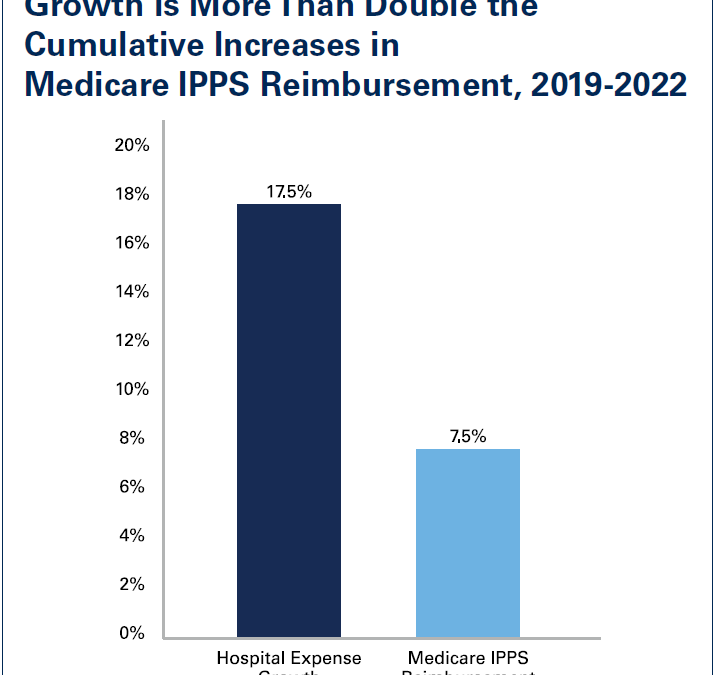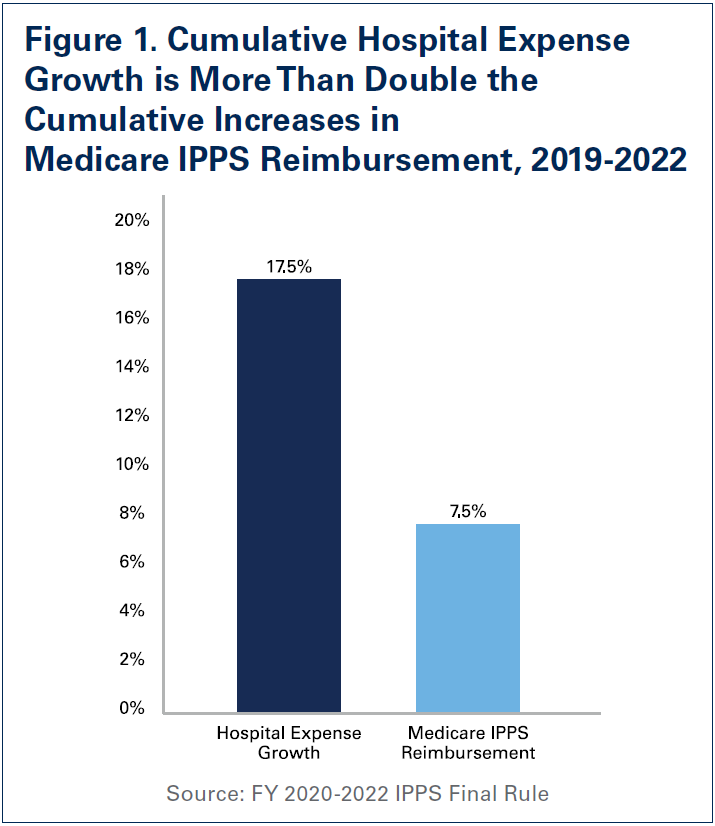Financial challenges mount for hospitals and health systems, putting access to care at risk, finds AHA


The American Hospital Association (AHA) has released a new report that details the extraordinary financial pressures continuing to affect hospitals and health systems, as well as access to patient care. The Costs of Caring report found expenses across the board saw double digit increases in 2022 compared to pre-pandemic levels, including for workforce, drugs, medical supplies, and equipment, as well as other essential operational services like IT, sanitation, facilities management, and food and nutrition services. These factors led to the most financially challenging year for hospitals and health systems since the beginning of the Covid-19 pandemic, leaving over half of hospitals operating at a financial loss at the end of 2022, and with negative operating margins continuing into 2023. This puts access to vital services at risk.
The report found:
- Overall hospital expenses increased by 17.5% between 2019 and 2022. This far outpaced Medicare reimbursement, which only increased 7.5% during this same time.
- Labor costs, which on average account for about half of hospitals’ total budget, increased 20.8% between 2019 and 2022. This is in large part due to a greater reliance on contract staffing agencies to fill workforce gaps and to meet patient demand. The outcome of this has been a staggering 258% increase in total contract labor expenses for hospitals in 2022 compared to 2019.
- For the first time in history, the median price of a new drug exceeded $200,000 — more than triple the median annual household income in the U.S. At the same time, price increases for existing drugs continue to outpace inflation, which helped drive a 19.7% increase in drug expenses per patient between 2019 and 2022.
- Hospital supply expenses per patient increased 18.5% between 2019 and 2022, outpacing increases in inflation by nearly 30%. Specifically, hospital expenses for emergency services supplies — which include ventilators, respirators, and other critical equipment – experienced a nearly 33% increase during the same time period.
- Purchased service expenses, which are expenses hospitals incur to create operational efficiencies such as IT, environmental services and facilities, and food and nutrition services increased 18% between 2019 and 2022.
- The burden associated with insurer-required administrative tasks also contributes to rising expenses and negatively affects patient care. Nearly three-fourths of nurses reported increases in insurer-required administrative tasks for medical services over the last five years. Nearly 9 in 10 nurses reported insurer administrative burden had negatively impacted patient clinical outcomes.
Rising costs for drugs, supplies, and labor coupled with sicker patients, longer hospital stays and government reimbursement rates that do not come close to covering the costs of caring for patients have created a dire situation for hospitals and health systems. This is not just a financial problem, it is an access problem. When health care providers cannot afford the tools and teams they need to care for patients, they will be forced to make hard choices, and the people who will be impacted the most are patients. We can’t let that happen. Congress and others must act to preserve the care our nation needs and depends on.
AHA President and CEO Rick Pollack
The full report, The Financial Stability of America’s Hospitals and Health Systems Is at Risk as the Costs of Caring Continue to Rise, along with a one-page summary, can be found at AHA. More information on AHA’s congressional asks to support hospitals and health systems can be found on AHA’s Advocacy Agenda page.
